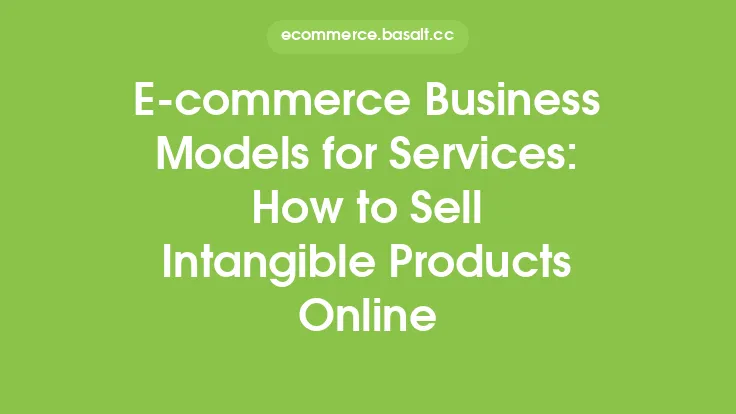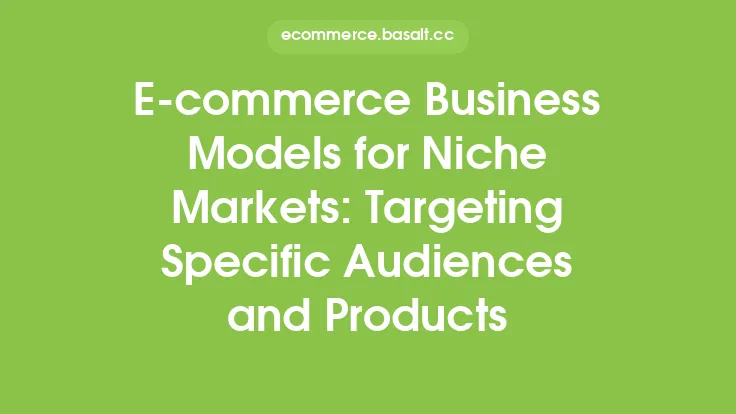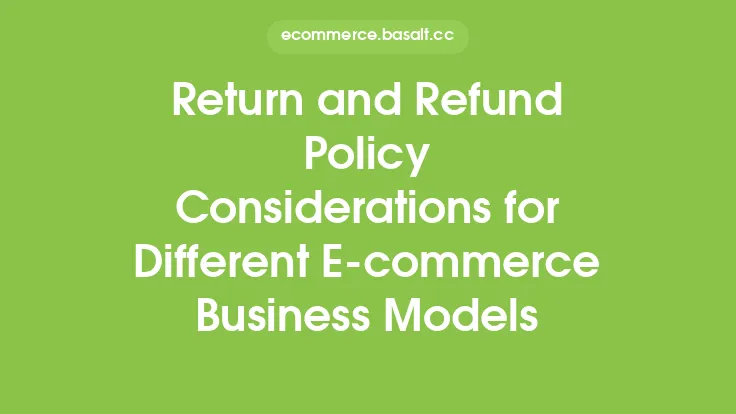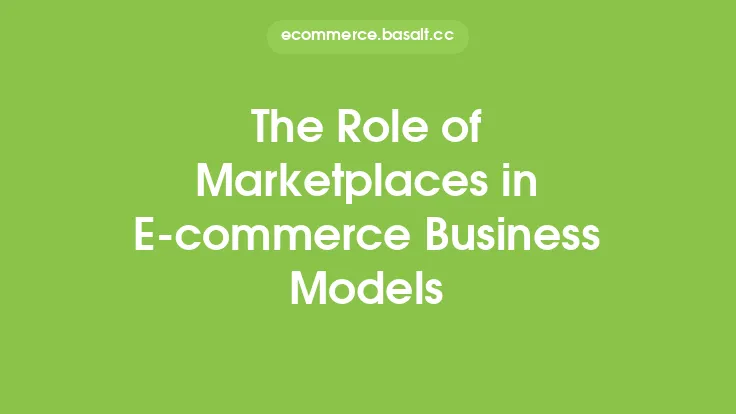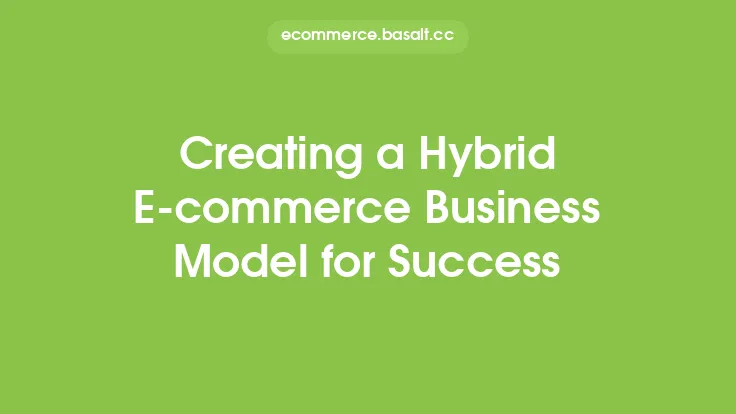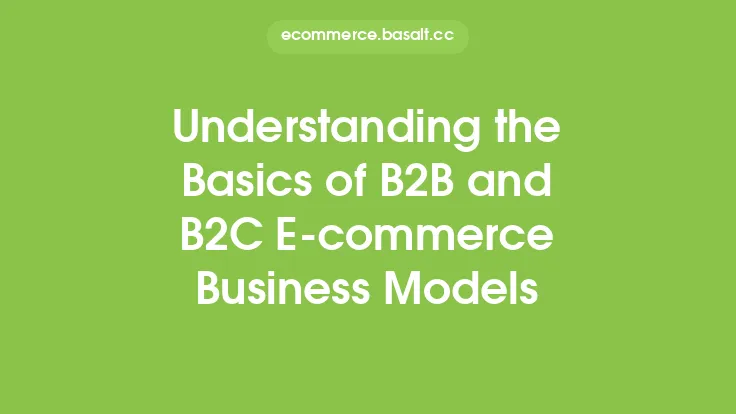The rise of digital products has revolutionized the way businesses operate and interact with their customers. With the advancement of technology and the internet, it has become easier for companies to create, distribute, and sell digital products to a global audience. In this article, we will explore the different e-commerce business models for digital products, their characteristics, and the benefits they offer.
Types of Digital Products
Digital products are intangible goods that can be created, stored, and distributed digitally. They can be categorized into several types, including e-books, software, online courses, stock photos, and digital art. Each type of digital product has its unique characteristics, and businesses need to understand these differences to develop effective e-commerce business models. For instance, software products require frequent updates and maintenance, while e-books can be sold and distributed with minimal maintenance.
Business-to-Consumer (B2C) Model
The B2C model is one of the most common e-commerce business models for digital products. In this model, businesses sell digital products directly to individual customers. The B2C model is characterized by a wide range of products, competitive pricing, and a user-friendly online platform. Companies like Amazon and Apple use the B2C model to sell digital products, such as e-books, music, and software, to individual customers. The B2C model offers several benefits, including low distribution costs, global reach, and the ability to collect customer data.
Business-to-Business (B2B) Model
The B2B model is another e-commerce business model for digital products, where businesses sell digital products to other businesses. The B2B model is characterized by a narrower range of products, higher prices, and a more complex sales process. Companies like Microsoft and Adobe use the B2B model to sell digital products, such as software and cloud services, to other businesses. The B2B model offers several benefits, including higher revenue potential, long-term contracts, and the ability to build strong relationships with business customers.
Freemium Model
The freemium model is a popular e-commerce business model for digital products, where businesses offer a basic version of their product for free and charge for premium features or upgrades. The freemium model is characterized by a large user base, low revenue per user, and a high conversion rate from free to paid users. Companies like Spotify and Dropbox use the freemium model to offer digital products, such as music streaming and cloud storage, to individual customers. The freemium model offers several benefits, including low customer acquisition costs, high user engagement, and the ability to upsell and cross-sell premium features.
Subscription-Based Model
The subscription-based model is an e-commerce business model for digital products, where businesses charge customers a recurring fee for access to their products or services. The subscription-based model is characterized by a steady revenue stream, high customer retention rates, and a low customer acquisition cost. Companies like Netflix and LinkedIn use the subscription-based model to offer digital products, such as video streaming and online courses, to individual customers. The subscription-based model offers several benefits, including predictable revenue, high customer loyalty, and the ability to offer exclusive content and services.
Digital Product Distribution Channels
Digital products can be distributed through various channels, including company websites, online marketplaces, social media, and affiliate networks. Each distribution channel has its unique characteristics, and businesses need to understand these differences to develop effective e-commerce business models. For instance, company websites offer a high level of control and customization, while online marketplaces offer a large customer base and low distribution costs.
Key Success Factors
Several key success factors are essential for e-commerce businesses that sell digital products. These include a user-friendly online platform, a wide range of high-quality products, competitive pricing, effective marketing and promotion, and excellent customer service. Businesses also need to ensure that their digital products are secure, reliable, and compatible with different devices and operating systems. Additionally, businesses need to stay up-to-date with the latest trends and technologies, such as artificial intelligence, blockchain, and the Internet of Things (IoT), to remain competitive in the digital marketplace.
Challenges and Opportunities
E-commerce businesses that sell digital products face several challenges, including intense competition, high customer expectations, and the need for continuous innovation. However, these challenges also present opportunities for businesses to differentiate themselves, build strong relationships with customers, and create new revenue streams. For instance, businesses can use data analytics and machine learning to personalize their products and services, offer exclusive content and experiences, and create new business models, such as subscription-based and freemium models.
Conclusion
In conclusion, e-commerce business models for digital products offer several benefits, including low distribution costs, global reach, and the ability to collect customer data. Businesses can choose from various e-commerce business models, including B2C, B2B, freemium, and subscription-based models, each with its unique characteristics and benefits. To succeed in the digital marketplace, businesses need to understand their target audience, develop effective e-commerce business models, and stay up-to-date with the latest trends and technologies. By doing so, businesses can create new revenue streams, build strong relationships with customers, and remain competitive in the ever-evolving digital landscape.
